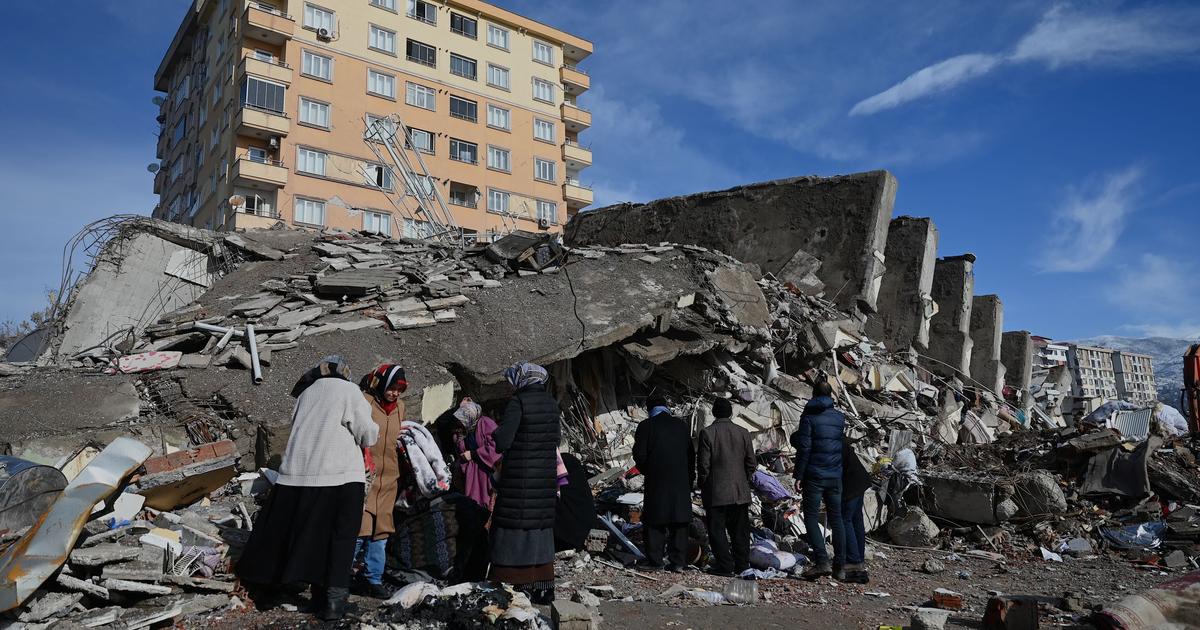The two earthquakes that struck Turkey and Syria nine hours apart are the deadliest of the beginning of the century in the region.
The area is particularly sensitive and had already experienced terrible earthquakes, notably in 1999, in the east of the country, and in 1939, in the north.
If the region is therefore regularly subject to violent earthquakes, was it possible to announce that of Monday?
This is suggested on Twitter by Dutchman Frank Hoogerbeets, who presents himself as a researcher in a "
research institute
" called "
Solar System Geometry Survey
" (SSGEOS).
“
Sooner or later there will be a magnitude 7.5 earthquake in this region
,” he posted on social media on February 3, three days before the disaster.
Its publication, seen more than 50 million times, obviously went viral after the earthquake.
The institute, which prides itself on being a visionary on the subject, published a new "
forecast
" on Wednesday February 8, stating that "
lunar geometry could cause strong seismic activity in the coming days, in particular around February 8, very probably in the magnitude 6 range
.
This forecast would be based on an index calculated according to the “
specific geometric positions of the planets
”.
Read alsoEarthquake in Turkey and Syria: why the earth is shaking so hard in the region
Scientists today are actually not yet able to predict earthquakes.
"
Simply because we don't know any obvious precursor signals
", explains to
Le Figaro
the seismologist Jean-Paul Montagner, of the Institute of Physics of the Globe in Paris.
The specialist uses an image: "
If you make a pile of sand by adding grain by grain in a regular and continuous way, there is bound to be a moment when the accumulation of sand will form a critical slope which will cause a collapse
”.
Seismic cycles
The pile of sand is therefore always in a critical state until the moment of rupture, as for tectonic plates.
The technical forces accumulate on the faults up to a breaking point.
“
The problem is that you can't know when it's going to break.
We only manage to determine seismic cycles over several decades, several centuries or even several millennia
,” explains the researcher.
Being able to rely on real "
seismic weather
" is today an unachieved holy grail for specialists, even if they have made great progress in recent decades, particularly in terms of location, not in time, but in space. .
Indeed, 90% of earthquakes occur on plate boundaries, and the most violent of them on subduction zones, such as in eastern Japan.
The “
geometry of the planets
” therefore does not make it possible to predict earthquakes.
Even if a minimal link has already been observed with the tides.
“
There is a very slight correlation,
smiles Jean-Paul Montagner who indicates that scientists have already looked into the question a lot
,
“
but the probability is so small that the prediction is useless
”.
Twitter users have also warned, below the publication of Frank Hoogerbeets and as the social network allows, that “
there is no scientific basis for earthquake predictions
”.
An AI to detect the gravity anomaly
In reality, the Dutchman regularly indulges in risky forecasts which therefore end up being winners when it comes to risk areas, in regions where earthquakes are regular.
Liberation
had thus noted in a fact-checking article in 2019 that the "
researcher
" had made announcements for January 21-24, 2019, January 2-4, December 29-25, 2018, December 7-13, 2018 and in November 2018, the 1st, 2nd, 23rd, 24th, 25th, 27th, 28th and 29th, noted the daily.
If there are no prophets of doom in the matter, scientists nevertheless manage to detect the first signals of an earthquake with warning systems which are based on the measurement of the P waves of an earthquake which arrive before the destructive S waves.
"
These are compression waves, the equivalent of acoustic waves in the earth, which are faster, between 6 and 8 km per second
", explains Jean-Paul Montagner.
The second are shear waves, slower, which arrive later: “
We gain a few precious seconds which can enable us to cut the current, stop an operation in a hospital or take shelter
”.
Read alsoThe underside of plate tectonics
The seismologist himself has also discovered with his team in recent years a tiny gravity anomaly when an earthquake occurs with a very high magnitude of 8 to 9. Measuring this disturbance, which propagates at the speed of light, can make it possible to gain a few more seconds of anticipation.
It is still necessary to develop instruments that could measure this gravitational disturbance for earthquakes below 8 on the Richter scale.
In any case, this is what a researcher from Nice is trying to develop by developing an AI capable of detecting the signal in real time.

